Stablecoins: The Outsiders of 2023

The bearish trend in Q1 2023 started showing signs of dissipating. It's not quite a bull run yet, but there's a glimmer of hope visible. Such is the conclusion drawn from the 2023 Q1 Crypto Industry Report by CoinGecko.
As of the close of the fourth quarter of the preceding year (i.e., January 1, 2023), the overall cryptocurrency market capitalization was $831.8 billion. The departure of bears from the crypto market led to a prompt 48.9% leap in market capitalization within Q1 2023, reaching $1.238 trillion. However, it's still premature to herald the arrival of the bulls: the market has only recuperated from the downturn of Autumn 2022, and explosive growth hasn't occurred yet.
The average daily trading volume saw an increase of 30% compared to Q4 2022. It's also important to note that this metric had previously shown a consistent negative trend (33% worse than the preceding quarter). Hence, the trading dynamics appear quite promising.
Spot market dynamics
The world's top 10 cryptocurrency exchanges collectively recorded a spot trading volume of $2.8 trillion in the period from January to March 2023, marking an 18% rise from the corresponding figure in the fourth quarter. Significantly, the spot volume is growing month on month, on average by $0.5 trillion. This is positive news for cryptocurrency holders and traders. Nevertheless, the spot trading volume in the first quarter has not yet achieved the $1 trillion per month level as seen, for example, at the start of 2022.
Interestingly, decentralized exchanges (DEX) are overtaking centralized exchanges (CEX) in terms of growth rate. The former saw a quarterly surge of over 33% compared to the 16.9% growth experienced by CEXs.
BTC, the foremost leader
Now that we have a grasp of the overall market situation, let's look at individual projects, starting with Bitcoin (with a market capitalization exceeding $521.5 billion). It's no secret that BTC is a market leader, but this time, it has also exceeded other assets in terms of growth dynamics.
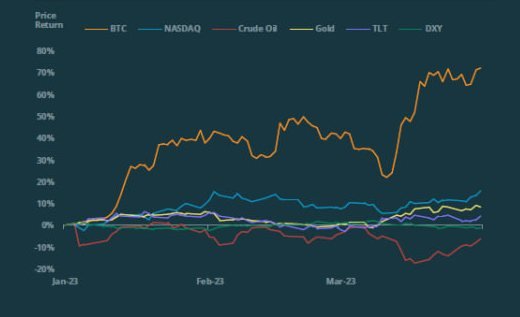
The total growth of major asset classes falls short when compared to BTC's. Source: CoinGecko 2023 Q1 Crypto Industry Report.
For comparison, gold's growth rate for Q1 2023 was 8.4% relative to the October-December 2022 period, the NASDAQ grew by 15.7%, and U.S. Treasury Bonds increased by 4.1%. Against these three, Bitcoin stands out remarkably with a surge of +72%.
Bitcoin's price started at $16,540 in January and ended the quarter peaking at $28,516. This level was last seen in June 2022, when the market began to decline after the Terra crash.
The DeFi and NFT ecosystem
The DeFi (Decentralized Finance) ecosystem demonstrated a remarkable growth trajectory in the first quarter of 2023, swelling by a significant 65.2%. This impressive expansion implies a windfall of approximately $29.6 billion in profit. This robust performance was largely fueled by governance tokens associated with liquidity staking. Specifically, the market capitalization of these tokens soared by an astounding 210.9% from January to March, following the Ethereum Shapella upgrade.
The NFT (Non-Fungible Tokens) scenario, however, offers a stark contrast. On one end, numerous reports are painting a grim picture of NFTs' market share plummeting close to non-existence. Conversely, CoinGecko presents a rather optimistic view, reporting a 68% surge in the market, bringing the total to $4.5 billion in the first quarter of 2023. Combined, Blur and OpenSea witnessed their share of trade volume climbing from 52.8% in December 2022 to 71.8% by March 2023. Nonetheless, during the same period, OpenSea's portion shrank from 29.3% to 21.7%, indicating Blur's gradual usurpation of its rival from the NFT stronghold.
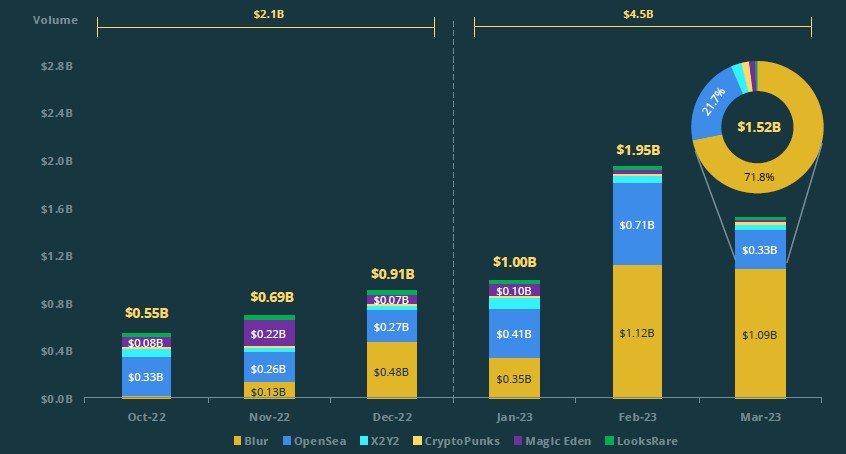
Top 6 NFT marketplaces. Source: CoinGecko 2023 Q1 Crypto Industry Report.
The downfall of stablecoins
Stablecoins emerged as the solitary segment of the crypto market exhibiting a downturn in market capitalization.
The leading 15 stablecoins together shed 4.5% of their value, translating into a loss of around $6.2 billion. This trend primarily roots in the cessation of Binance USD (BUSD) issuance.
The BUSD stablecoin, backed by the US dollar, was initiated by blockchain-based startup Paxos in collaboration with Binance, post securing approval from the New York State Department of Financial Services (NYDFS). However, in mid-February 2023, the US Securities and Exchange Commission (SEC) forwarded a Wells Notice to Paxos, which was subsequently subjected to an investigation by the NYDFS.
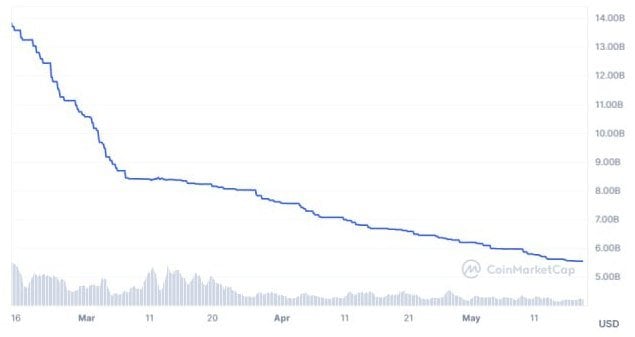
BUSD Market Capitalization over the previous 3 months. Source: CoinMarketCap.
In addition, the brief depeg of USD Coin (USDC), precipitated by the collapse of SVB Bank (a financier for IT projects), had a decidedly negative bearing on the overall market capitalization of stablecoins.
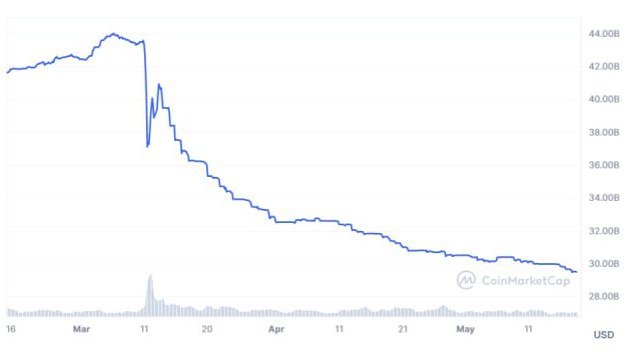
USDC Market Capitalization over the last 3 months. Source: CoinMarketCap.
On a brighter note, Tether (USDT), the leading stablecoin, managed to consolidate its position, enhancing its market capitalization by 20.5% to reach $13.6 billion. However, USDC and BUSD lost 26.9% and 54.5% respectively, effectively wiping out all the advancements of 2022.
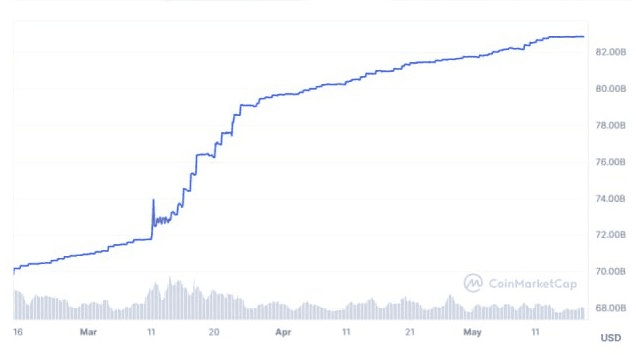
USDT Market Capitalization over the last 3 months. Source: CoinMarketCap.
Amid the fluid situation in the stablecoin sphere, the US Senate crafted a document named "Payment Stablecoin: The Future of Money and Banking". As we have previously reported, this legislative proposal significantly tightens regulatory standards, marking the culmination of a year-long inquiry by the Senate Committee on Banking and Financial Affairs.

